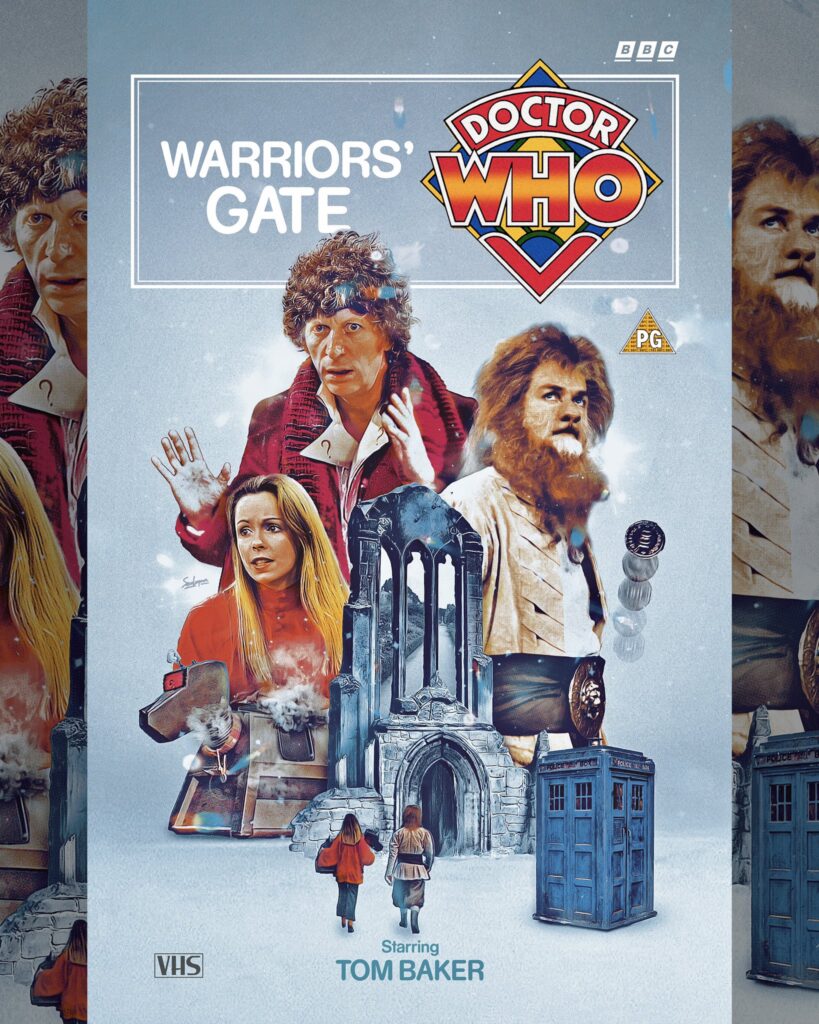First TV sale. A Season 18 four-part story with Tom Baker as The Doctor, Lalla Ward as his companion Romana, and Matthew Waterhouse as Adric.
It’s by sheer fluke and a stroke of luck that in my two stints as a Doctor Who scripter I was given responsibility for the final appearances and departures of three major characters—companions Nyssa and Romana, and robotic sidekick K9. Nyssa was played by Sarah Sutton, Romana in her second incarnation by Lalla Ward, and K9 by a harassed FX team plus the vocal talent of John Leeson. If you loved them and you miss them, don’t blame me. In series television, such departures are part of the given assignment. They’re the result of decisions made above the writer’s pay grade, so to speak. Sometimes an actor has chosen to leave a show. Sometimes it’s a change of creative direction that leaves no place for the character going forward. Specific storylines end. Contracts expire and aren’t renewed. And sometimes it’s another factor altogether; before I went freelance I worked for a commercial TV station where a player in their long-running soap tried to leverage his position for a higher fee, only to be handed a script in which his character was blown away by a shotgun in a Post Office raid. Another was let go when she returned to the show after cosmetic surgery. She’d had so much work done that no one could tell who she was supposed to be.
But the fluke, and the stroke of luck… the fluke was that both of my stories fell at a point in the season where a character was set to leave. The stroke of luck was that in each case this gave me something of dramatic potential to work with. Series characters are designed for consistency across multiple stories. It’s a rare opportunity when a writer gets to place them in life-changing situations. In Romana’s case this meant giving her the confidence and will for an independent future as a Time Lord with a status equal to that of The Doctor. With Nyssa, it was her sharing of the Lazars’ suffering leading her to a fictional life of service.
With K9 it was a different matter. I don’t know what it was about the late ’70s, but quirky robot sidekicks were so much a thing. R2D2, Twinky in Buck Rogers, Bubo the Owl in Clash of the Titans, VINCENT in The Black Hole… they were basically the science fiction equivalent of Cheetah the Chimp from the Tarzan movies, and at least as annoying. With K9 I had the feeling that the trend had run its course and that working him into every story was proving a pain. Even more of a pain was the fact that his radio controls could interfere with the electronics of the studio cameras, requiring a halt to shooting while they were rebooted in a lineup routine only normally performed before the start of each day’s work. When you only have a couple of days in studio to capture two hours’ worth of scenes, such delays can have a serious impact on your schedule. Well, much as you couldn’t simply have Cheetah shot by poachers—not unless you wanted the young audience to suffer the kind of PTSD experienced by kids who expected cute bunnies in Watership Down—I couldn’t just ‘kill off’ K9. The only way you can get away with that kind of thing is in some Adric-like act of supreme self-sacrifice, and… well, this is K9 we’re talking about. No matter how well you did it, you’d be flirting with bathos. Consciously or unconsciously, I recycled an element from a 1961 Superboy story in which Our Hero saves his ‘brother’ Mon-El from a fatal exposure to lead (Mon-El’s version of Kryptonite) by sending him into the Phantom Zone, where he’s safe from its effects. If he leaves the Zone, he dies. I’d be 8 or 9 when I read it, but it stayed with me. So I had K9 suffer irreversible deterioration after exposure to the Warriors’ Gate Time Winds, only to be backwound to a state of health on the other side of the Gateway with no option of return. Whatever happened thereafter would be Romana’s problem, not mine.
Stephen Gallagher





